Modern means of mining in the service of the armies of the world
According to experts, mine weapon can be used not only in defense, but also in the offensive, since modern mining means assume their high-speed installation, which allows you to arrange minefields directly during the battle.
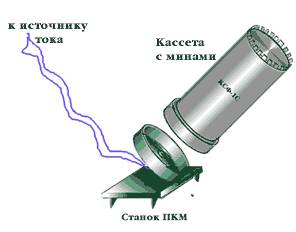 Portable mining set "Wind-M", PKM-1 known since the days of the Soviet army. It is the simplest combined arms with which you can remotely install anti-tank and anti-personnel mines. The peculiarity of the kit is that it can be installed not only in advance, but also directly in the course of the battle, which significantly increases the capabilities of the tactical defense of the troops.
Portable mining set "Wind-M", PKM-1 known since the days of the Soviet army. It is the simplest combined arms with which you can remotely install anti-tank and anti-personnel mines. The peculiarity of the kit is that it can be installed not only in advance, but also directly in the course of the battle, which significantly increases the capabilities of the tactical defense of the troops. The kit includes a primitive launcher of the PM-4 blasting machine, two coils of cable for 50 meters each, and a bag for carrying. The whole set weighs about 2,5 kilograms. The machine is made in the form of a metal sheet of small size, to which the pallet with electrical contact is fixed at an angle of 45 degrees. The machine is placed cassettes with anti-personnel or anti-tank mines, and then used to shoot these tapes. The machine works extremely simply - when the cassettes are attached to the machine, the contacts are closed between them. Then the blasting machine delivers an electric pulse, the expelling powder charge ignites in the cassette. This makes it possible to throw a mine around 30-35 meters. Regardless of the type of mines, the sizes of the cassette remain the same, only the marking on them changes. Thus, there CSF-1 cassette 72 antipersonnel mines PFM-1, cassette CSF-1S-0.5 with 36 antipersonnel mines PFM-1 and the same amount of PFM-1S cassettes CSF-1S with 64 antipersonnel mines PFM-1S CSR cassette -1 with 8 antipersonnel mines POM-1, cassettes KPOM-2 with software aprons anti-personnel mines POM-4, as well as cassettes KPTM-2 with 3 anti-tank mine PTM-1 and cassettes KPTM-3 with a software and aprons with PTM-1 and KPTM-3 cassettes
Mines thrown out of cassettes are scattered and form an ellipse of dispersion. Its dimensions are about 8-10 meters wide and 18-20 meters long. The probability of damage, depending on the type of mine, ranges from 0,5 to 7 meters. Anti-tank mines are thrown about 100 meters away.
It is possible to install single and multi-strip minefields.
This system of remote mining is valuable for its simplicity, the possibility of mining without leaving the trench, establishing mine fields suddenly for a possible enemy and undermining at the right time.
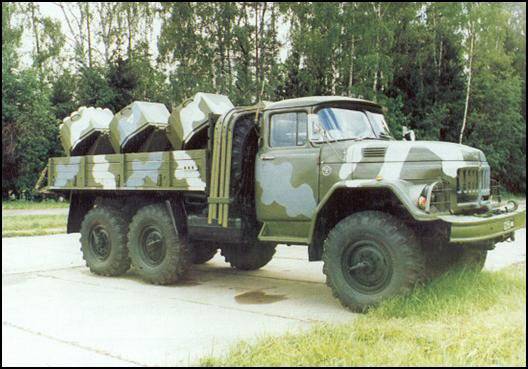
Another mine device from Soviet times is universal minelayer UMZ. This is one of the systems of remote mining, intended for the installation of anti-personnel, anti-tank and mixed minefields. At the same time mines can be installed only on the surface of the soil.
The minelayer is installed on the chassis of the onboard car Zyl-131В. 6 units of cassette units are installed in the body on the rotator, and the emission control system is installed in the cab.
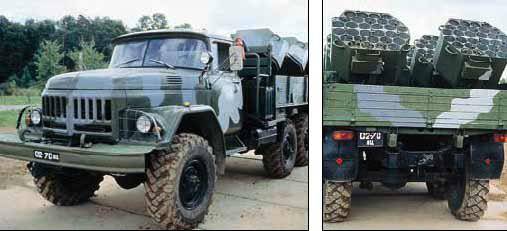
Cassette units are independent of each other and can be rotated 360 degrees at different tilt angles.
Depending on the scheme of mining, the rotation of the cassettes and their angle of inclination are selected. All this is done manually before the start of mining.
Up to 30 cassettes can be installed in each unit. And the complete set of the hawser is 80 cassettes. Based on the foregoing,-layer can be simultaneously charged 180 antitank mines PTM-3, 540 antitank mines PTM-1, thousand about 12 antipersonnel mines PFM-1, 1440 antipersonnel mines POM-1 720 and antipersonnel mines POM-2.
You can use and mixed charging cassette units. Then, in one go, the minelayer can carry anti-personnel and anti-tank mines or mines of the same type, but of various options. You can set the field and for several visits, as well as replenish ammunition at any desired moment.
During the mining process, the minelayer can reach speeds from 5 to 40 kilometers per hour. Repeated recharging of a 2 person can be done in approximately 1,5-2,5 hours, and the demining unit from 6 people - in an 1 hour.
This barrier is apparently no different from the usual ZIL, so the enemy will not be able to identify him. The crew of the car will include two people - the driver and the operator.
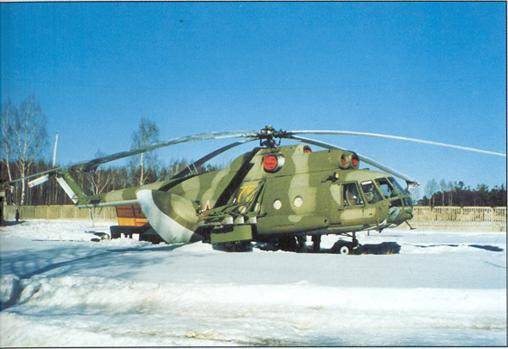
A more modern means of mining is helicopter mining system VSM-1. It is used to install anti-tank, anti-personnel and anti-landing minefields using Mi-8MT and Mi-8T helicopters. Most often, this system is used in order to quickly establish minefields in the places of enemy breakthroughs, as well as in the areas of its advancement into the protected territory. The VSM-1 is produced by the Kazan Helicopter Production Association, and a system has been developed at the State Research Engineering Institute of the city of Balashikha.
The system, in addition to the mining control panel, contains containers for mines in the number of 4 units, a trolley for transportation, a console and a system for lifting the container. Each container provides space for 29 cassettes KCO-1.
The construction of a minefield is carried out during a flight over a terrain that must be mined.
This system is most effective for mining mountainous areas. It was used in Afghanistan as a preventive measure against the Mujahideen. The speed at which mines are scattered is about 8,5 thousands of mines per minute in an area of about 25 meters wide and 2 kilometers long.
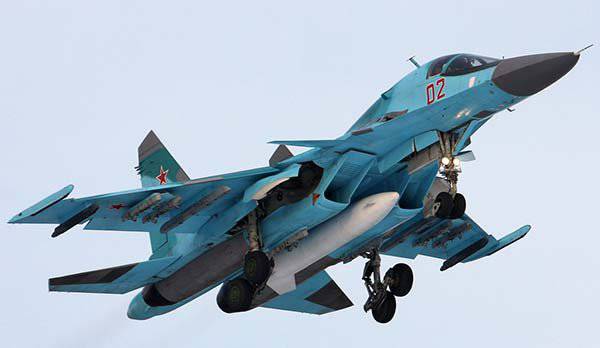
Another effective mine action is universal container of small loads KMGU, which is intended for transportation and dropping of front container blocks with fragmentation, high-explosive, cumulative and incendiary ammunition. The cassettes, after dropping, are opened, thus ensuring the movement of ammunition along the target trajectory. Externally, the container looks like an aluminum power case, which has a streamlined shape and two compartments for accommodating cassette units. In the lower part of the body there are sashes that operate from a pneumatic actuator. He, in turn, works from a cylinder of compressed air. Container carriers are the Mi-28H and the Su-17, Su-27, Su-24, MiG-29 and MiG-27 airplanes.
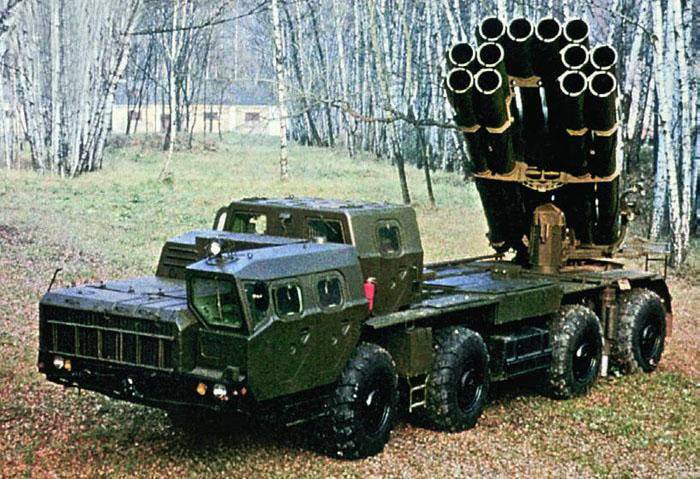
Means of remote mining for RZSO "Smerch" with a missile 9М55К4 - This is a mining tool designed to set up minefields using anti-tank mines ПТМ-3. Mines are placed in cassette blocks for five minutes on each of the five tiers.
The head of the projectile is detached, and the mines are ejected using a squib. At the same time, they are put on alert, and after 90-100 seconds the mines touch the surface of the soil. The scattering ellipse depends on the trajectory and range and is approximately 2 per 2 kilometer.
In order to obtain such a minefield, 12 charges are necessary, that is, one full salvo of "Tornado". The shells are scattered about 150 meters as a result of the constant adjustment of their movement using gas-dynamic rudders, as well as rotation around its axis.
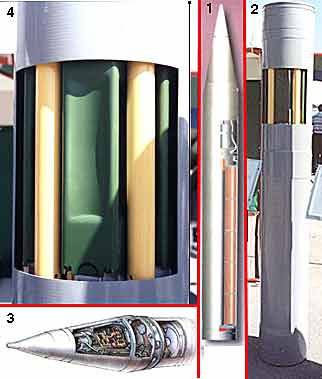 Mines are on alert for a day, after which self-destruction takes place. If the mines are in a malfunctioning state or are not in a state of alert due to an improper position, they will also self-destruct within a day. And if they were in close proximity to cars or tanks on metal structures, the explosion occurs instantly.
Mines are on alert for a day, after which self-destruction takes place. If the mines are in a malfunctioning state or are not in a state of alert due to an improper position, they will also self-destruct within a day. And if they were in close proximity to cars or tanks on metal structures, the explosion occurs instantly. The safest distance for people after the start of self-destruction of mines is about 300 meters from the extreme mine. Also mines of the PTM-3 type can be destroyed with the help of EMT trawls.
The 9M55K4 rocket projectile is used in the Smerch multiple rocket launcher 9K58, which was used by the Soviet forces in the year 1987. Currently, other types of projectiles are used for this installation.
The projectile itself is modular and differs only in combat units: high-explosive fragmentation, cumulative fragmentation, space-detonating, incendiary, as well as using self-guided anti-tank combat elements.
The Smerch system is capable of speeds up to 60 kilometers per hour. The launcher includes 12 tube guides. A full volley is carried out in 20 seconds, the range of destruction - from 20 to 70 kilometers. The unit is recharged by the 9Т234-2 transport-charging machine in 10-15 minutes.
The complete set of Smerch installations includes the 9A52-2 launcher, the 9Т234-2 transport-charging machine and the KAMAZ-4310 machine with the Vivarium fire control system, which is used for six installations.
Experts are sure that modern means of mining have become more effective due to the use of electronic fuses and the possibility of programming mines for self-destruction after a certain time, increasing mechanical strength due to the use of durable materials, making it possible to drop them from a great height without damage, increasing the number of remote mining systems used not only by military engineers, but also by other combat arms.
NATO Remote Mining Systems
The command of the armies of the North Atlantic Alliance, which for a long time considered mines to be the passive means of introducing hostilities, reassess their increased potential. Every day the term “land mine war” is becoming increasingly popular.
The minelayers that are in service with the NATO forces are designed to set up anti-tank mines. They are divided into two groups: self-propelled and trailed. Most of the trailers are trailers. The distance between mines can be adjusted, so you can increase or decrease the density of the minefield. Most of the mines are anti-tank anti-bottom wheels that hit Broncel throughout the whole area. Anti-tracked mines are also used in order to make it difficult for the enemy to overcome an established minefield.
The FFV 5821 minelayer is located in the MiWS land mining system. This is a hitch, for towing which a regular car with 720 mines is used. At a speed of 7 kilometers per hour, the minelayer can set up to 20 minutes per minute. Developed device by a Swedish company. Deliveries began in 1989, in Germany, and later in the Netherlands.
A trailed minelayer used in the UK forces is a standard device used by engineers to install anti-tracked anti-tank mines L9A1. Currently, this type of mine is equipped with a new fuse that operates under the entire target area. The FV 432 “Trojan” tracked armored personnel carrier with 144 mines is used to tow it. For installation of mines on the surface of the ground, FV 602 “Stolvet” is also used, which can carry up to 500 min.
Spanish trailed mine layer ST-AT / V is used to install anti-tank, anti-trailing and anti-track mines. An armored personnel carrier with 200 mines is used for towing. Works hawser with speed 4 kilometer per hour.
The French minelayer F1 has a wheelbase. The main feature of it is that when installing mines, it opens for each of them an individual well, without damaging the vegetative layer. The hydromechanical body raises the turf, and after the device the mines lower it back and level the surface with a roller. The barrier is designed to install mines of the same size, for example, such as anti-tracked ASRM.
In the cargo compartment of the installation are 112 cassettes min each in the number of 4 units. When you install each mine machine stops, and all actions are automated. Mining speed is about 400 min per hour.
Remote mining systems are new tools that enable the installation of minefields in the shortest possible time at a distance from a few meters to hundreds of kilometers. Mines of various types - anti-tank, anti-personnel, anti-vehicle, means for their installation and the carrier itself, which can be used as ground vehicles, artillery shells or missiles, and airplanes and helicopters, go into the structure of systems.
Ground-based mining systems are machines that are capable of shooting or throwing mines at a distance of 30-100 meters, thus forming a minefield of several tens of meters. Mines that have fallen to the surface are brought into a combat position and work either in the course of the target’s impact, or when trying to move them, or in the process of self-destruction. Systems of this type include the American mining systems GEMSS, Vulcan, German MiWS, Italian Istriche, and British Ranger.
Artillery systems are mining tools that use standard artillery guns to fire mines with cluster charges. After falling to the surface, they are brought into the firing position and are triggered during the action of bronzesel or after the expiration date These include US systems RAAMS and ADAM.
Rocket mining systems use standard MLRS for minefield devices. Despite the fact that many countries are engaged in similar developments, they are in service only in Germany. They use the Lars-2 system - it is a 36-barrel launcher. Combat cassette part is revealed at a given point, and the mines descend on parachutes under the action of the air flow. After landing, the parachute is detached, and the mine is on alert.
According to NATO experts, it is advisable to use helicopter systems to build barriers on enemy routes pursuing departing troops to cover the flanks, as well as to strengthen barriers already installed. The lack of such systems is that helicopters operate at extremely low altitudes, which greatly increases their vulnerability. Most commonly used are two main types of such systems - universal, which are mounted on board the machines, as well as those installations that are transported on the external suspension of the helicopter. Among the helicopter systems can be noted the American system "Volcano", the Italian DATS, SY-AT, which is used in Spain and Portugal.
Together with the equipping of NATO troops with these means of mining, it is also assumed that new types of such weapons will be developed, the effectiveness of which is being tested during the exercise.
Representatives of the military department identify several main areas in which the development of new minefield systems should be developed. These include the development of anti-tank mines capable of hitting targets at a distance of up to 100 meters, the creation of anti-helicopter mines that can hit air targets at low altitudes, as well as sabotage mines for special forces.
The solution of all these problems is planned in the next decade.
Information